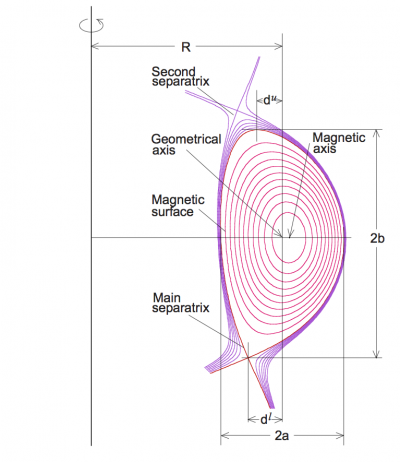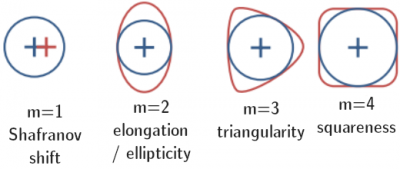Ellipticity
The ellipticity (also referred to as elongation[1]) refers to the shape of the poloidal cross section of the Last Closed Flux surface or separatrix of a tokamak.


Assuming[1]:
- Rmax is the maximum value of R along the LCFS or separatrix.
- Rmin is the minimum value of R along the LCFS or separatrix.
- Zmax is the maximum value of Z along the LCFS or separatrix.
- Zmin is the minimum value of Z along the LCFS or separatrix.
- a is the minor radius of the plasma, defined as (Rmax - Rmin)/2.
The ellipticity is then defined as follows:
Higher elongation is beneficial for fusion performance, but comes with increased vertical instability growth rate and thus increased risk of vertical displacement event (VDE) type disruptions.[2] Because of vertical stability constraints, is usually limited to a value close to about 1.8.
See also
References
- ↑ 1.0 1.1 T.C. Luce, Plasma Phys. Control. Fusion 55 (2013) 095009
- ↑ D.A. Humphreys, et al., Experimental vertical stability studies for ITER performance and design guidance Nucl. Fusion 49 (2009) 115003